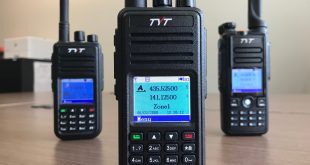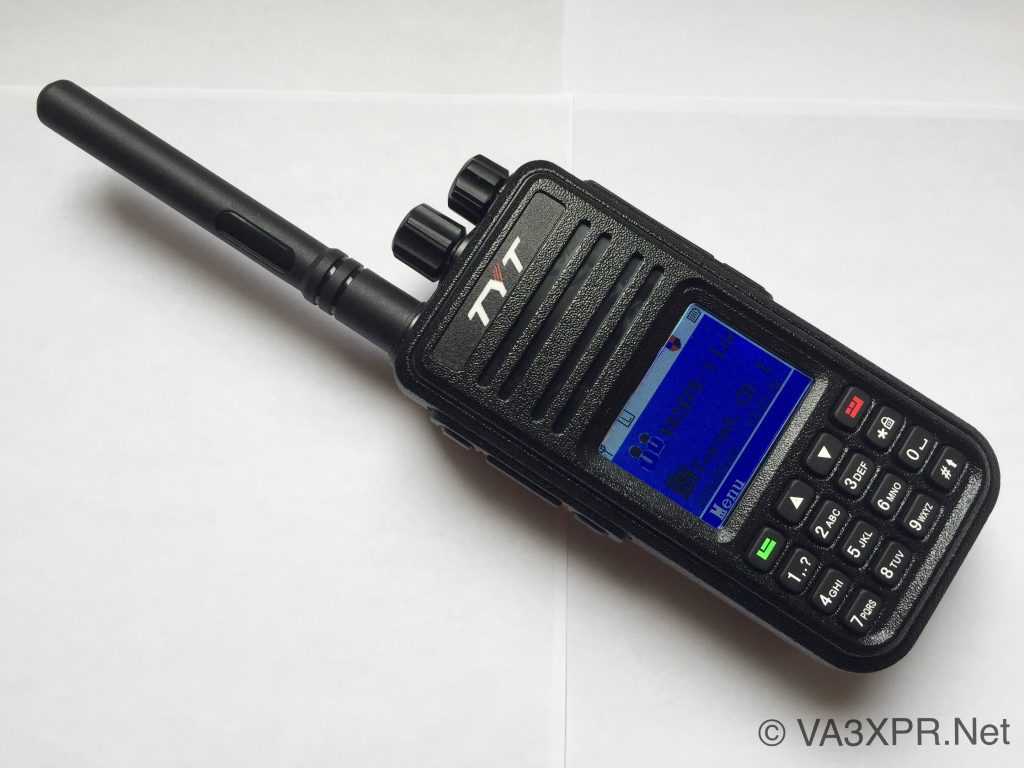
The Tytera TYT MD-380 is one of the latest value priced DMR radios to emerge from the Chinese market. This unit packs many features, including, superb audio, a multicoloured LCD display, front panel programmability, rugged construction, plus much more. This is a great radio for anyone looking to get started with DMR and at the time of this review, the end-user pricing directly from the vendor was $170 USD.
Author's Rating | Price |
$170 USD |
The Good
- Audio Volume and Quality: The audio from this radio is full, with a good response to low frequencies, making it pleasing to listen to and it will get heard, even in the noisiest environments;
- Rugged Construction: This radio is very well-built, so it should keep going long after typical ham radio units call it quits;
- Multicolored LCD Display: Having a multicolored LCD display on the radio allows for easy use and programming while on the move;
- Front Panel Programming: This radio is capable of being programmed via the keypad, allowing users to make changes without the need for the PC;
- Antenna Connector: The antenna connector for this radio uses a SMA connection, allowing it to easily be connected to an external antenna;
- Price: At $170 USD, this radio is a very attractive option for anyone looking to get started with DMR.
The Bad
- Software Polish: There are a number of oddities within the firmware of the radio that impacts its overall user experience;
- Bluetooth Capability: This radio is not Bluetooth capable, so the use of wireless audio accessories is not possible;
- Desktop Charger: The desktop charger takes hours to charge the radio, plus the green “finished” LED indicator does not turn off, even when the radio is removed from the charger.
The Full Review
The Package
The Tytera TYT MD-380 radio comes standard with the following items out of the box:
- MD-380 radio operating on either the 400 – 480 MHz (UHF) or 136 – 174 MHz (VHF) bands;
- Stubby antenna (UHF model);
- Whip antenna (UHF model);
- Desktop charger cradle;
- 120/240V desktop charger power supply;
- 2,000 mAH Li-ion battery;
- Belt clip;
- User manual.
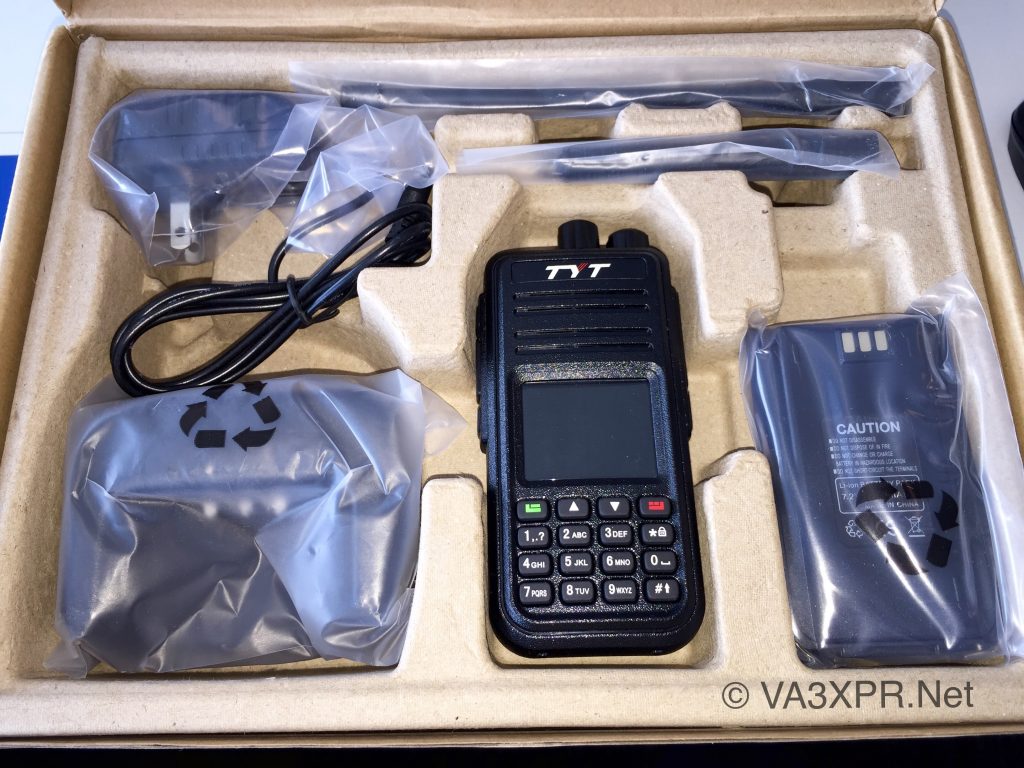
Form Factor
The MD-380 is a compact portable radio that is small, lightweight, has a great ergonomic design. Being only about 13cm (5 1/4”) high and 258g (9.1oz), this radio fits nicely in the hand and can even be carried in a shirt pocket, making it a pleasure to use. In addition to its design, the radio appears to be well built with a solid feel and the accessories fit well, including the battery, antenna and the accessory port dust protector. While the MD-380 does not claim to meet any specific environmental operating standards, its build quality should more than suffice for typical ham radio use.
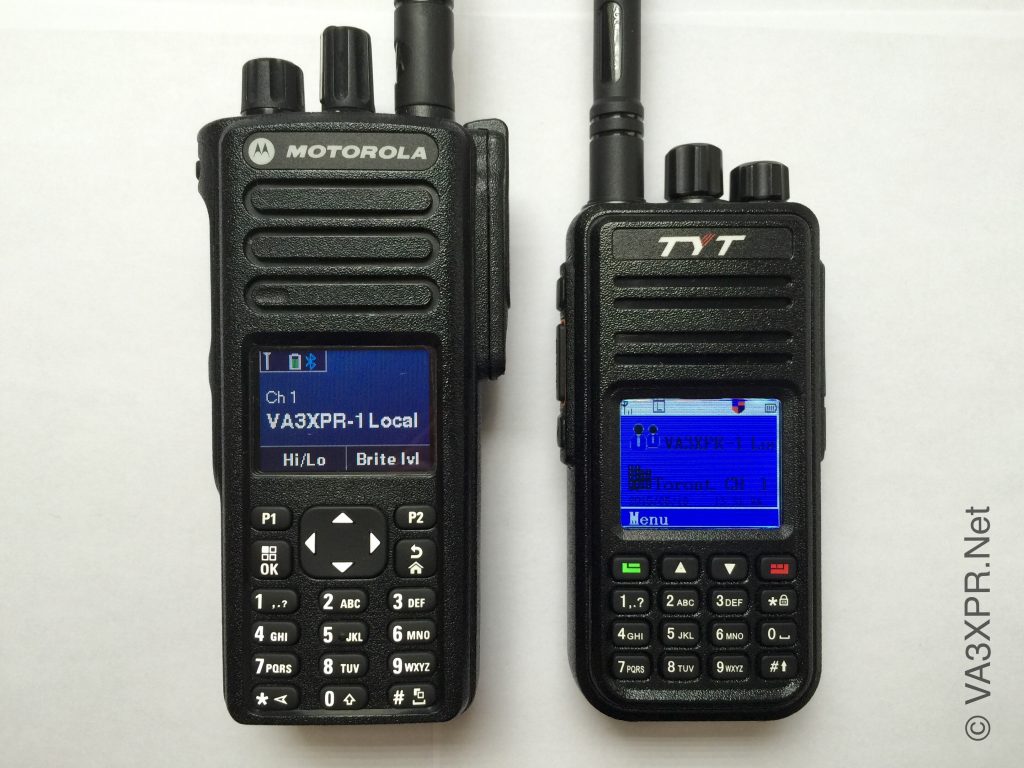
Knobs, Buttons & Switches
There are two knobs on the MD-380 – one is the power switch/volume knob and the other is the channel selector knob. Both of these knobs are easily accessed on the top of the radio and they both provide a slight “click” as positive indication that either the radio is turned on/of or that the channel is changed. Unlike with some other DMR radios, the channel change knob does not continuously rotate and is limited to the standard 16 positions. Also, while the knobs have not been constructed using a high grip material, they can be easily used while wearing gloves or mittens. One small noteworthy item is that the channel selector knob and the channel numbers below it are not coloured white, so having a visual indication of the current channel number in use is difficult. Fortunately, all of this information is available on the LCD screen of the radio, so it shouldn’t be an issue for most users.
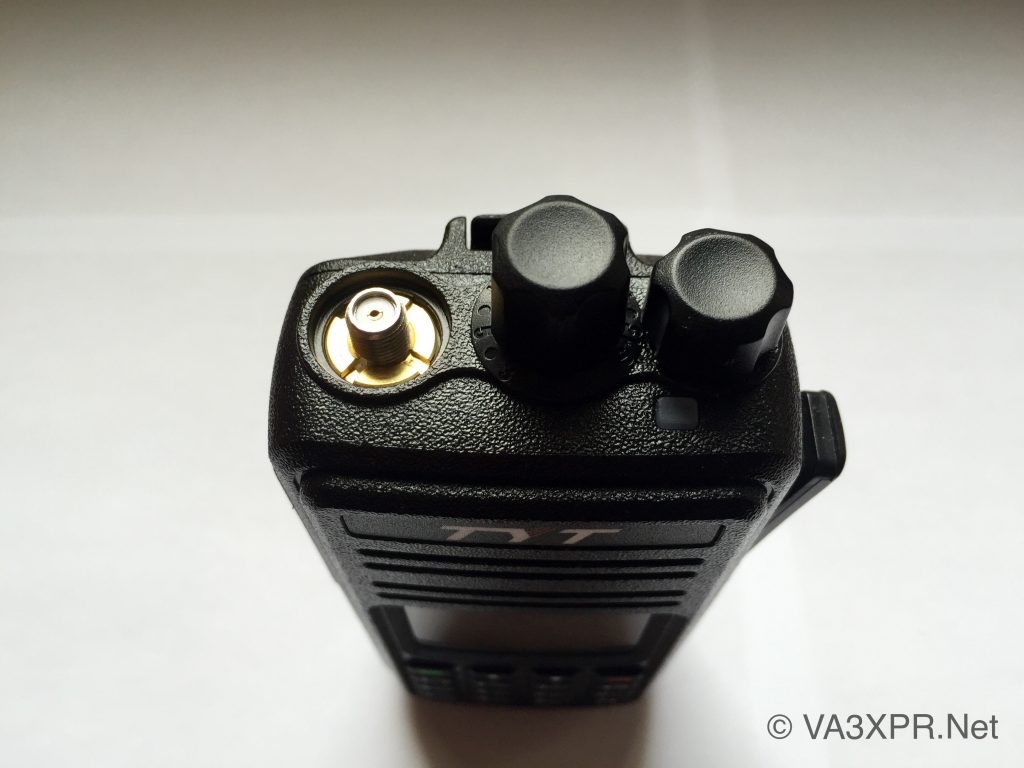
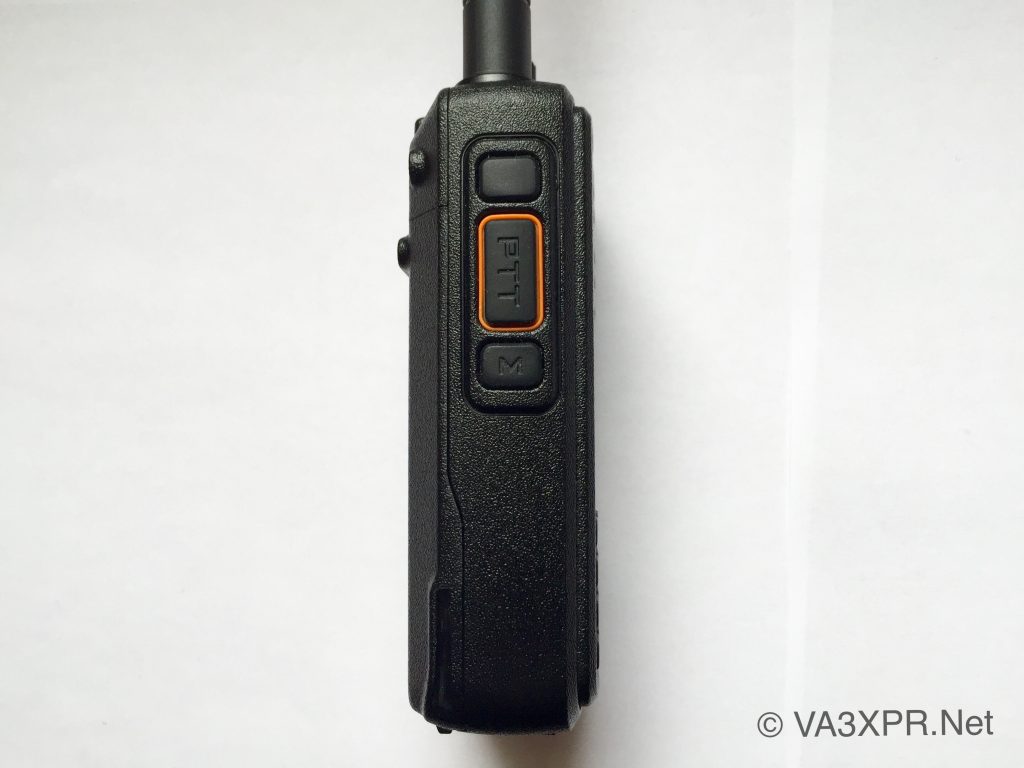
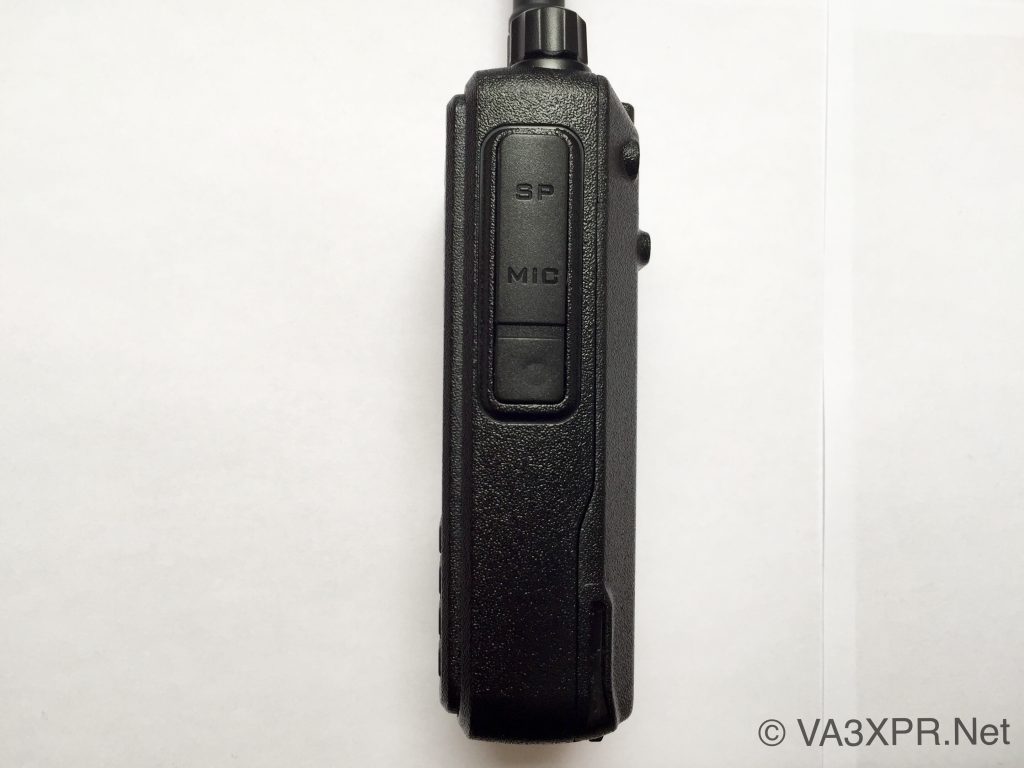
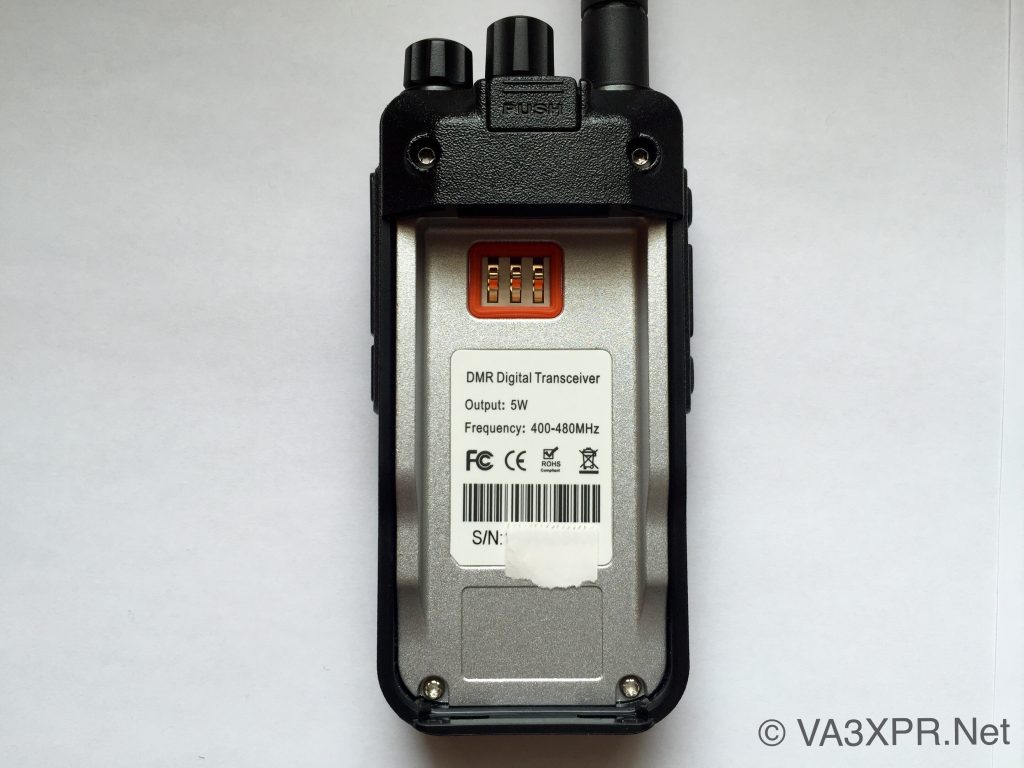
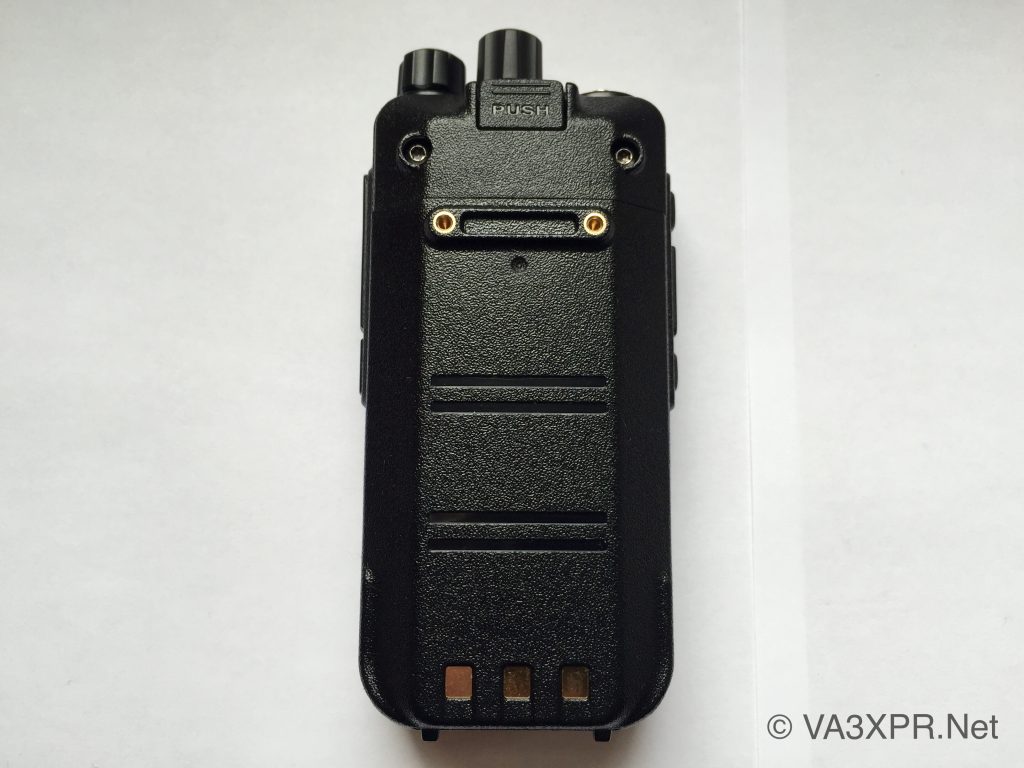
With regard to the buttons, the MD-380 comes equipped with two programmable side buttons, however unlike many other DMR radios, it does not have a programmable top button. The function of each of these side buttons can be set in the programming software to perform the desired task. Also, the MD-380 comes equipped with a 16-button keypad, which includes two navigation buttons to navigate the radio’s menu and settings. It should be noted that the MD-380 does not include the DTMF keys “A”, “B”, “C” and “D”, which are sometimes used with ham radio applications, however the standard DTMF keys work as expected. Also, the keypad buttons are backlit, which helps a great deal when using the radio at night or in dark environments.
With regard to the side buttons, including the push to talk (PTT) button, they are constructed of high grip material, making them easy to push without having the fingers slip accidentally. It is important to note that the PTT button is slightly raised above the radio’s body, which could likely result in the accidental keying of the radio, so users should consider this when picking up the radio or carrying it in tight-fitting carry cases.
Antenna
The UHF version of the MD-380 comes standard with two antennas – a stubby antenna and a wideband whip antenna. Presumably, the wideband whip antenna will provide better performance than the stubby antenna, however likely at the cost of making the radio somewhat less portable. The antenna connector used with the MD-380 is a standard SMA female connector, making it easy and inexpensive to connect it with an external antenna with the purchase of a SMA male adapter.
Audio
One of the best features of this radio is its audio quality, which is impressive for such a small form factor. Not only does the radio have loud, clear audio, but it also has a wide audio frequency response, providing good response to low audio frequencies. The rated speaker output from the vendor is 1,000mW, which may be overstated, since the radio volume seems to be on par with other DMR radios that have a 500mW speaker. Nonetheless, this radio will be heard in noisy environments where many typical ham radio portables will be inaudible. The fullness of the audio is one of the best features of the radio, making it a very pleasing unit to listen to.
There are a few annoyances concerning the radio alert tones. First, the volume of the alert tones is not configurable, so turning on the radio in a quiet environment results is a loud power on tone. It would be ideal if the volume of such tones would match the audio volume setting or be configurable in the CPS. Another time issue with the alert tones was the Call Receive Tone, which at the time of testing, could not be configured to function. While neither of these audio items hinders use of the radio, they may be frustrating for some users and will hopefully be addressed with a future firmware release.
With regard to microphone audio, the audio appeared to be fine, right out of the box with good reports being received from other stations during test transmissions. It should be noted that the microphone audio level is not user adjustable at the time of testing, so if users receive complaints of hot or low audio, they will need to adjust the distance to which they are talking into the radio.
One feature that the MD-380 does not support, which is becoming more commonplace with DMR radios is Bluetooth capability, which is enables the use of wireless audio accessories. With the advent of distracted driving laws in North America, this feature is being used more and more by hams during their mobile operation. For users who require this functionality, they will likely need to look to higher tier DMR radios, which usually include this capability.
Display & Indicators
One of the most notable features of the MD-380 is that it comes with a multicoloured LCD display. This welcomed improvement over the green LCD display used by the Connect System CS700, as it allows for much more information to be displayed to the user, such as the current channel name, zone, channel number, time, date, signal strength, power setting and battery level.
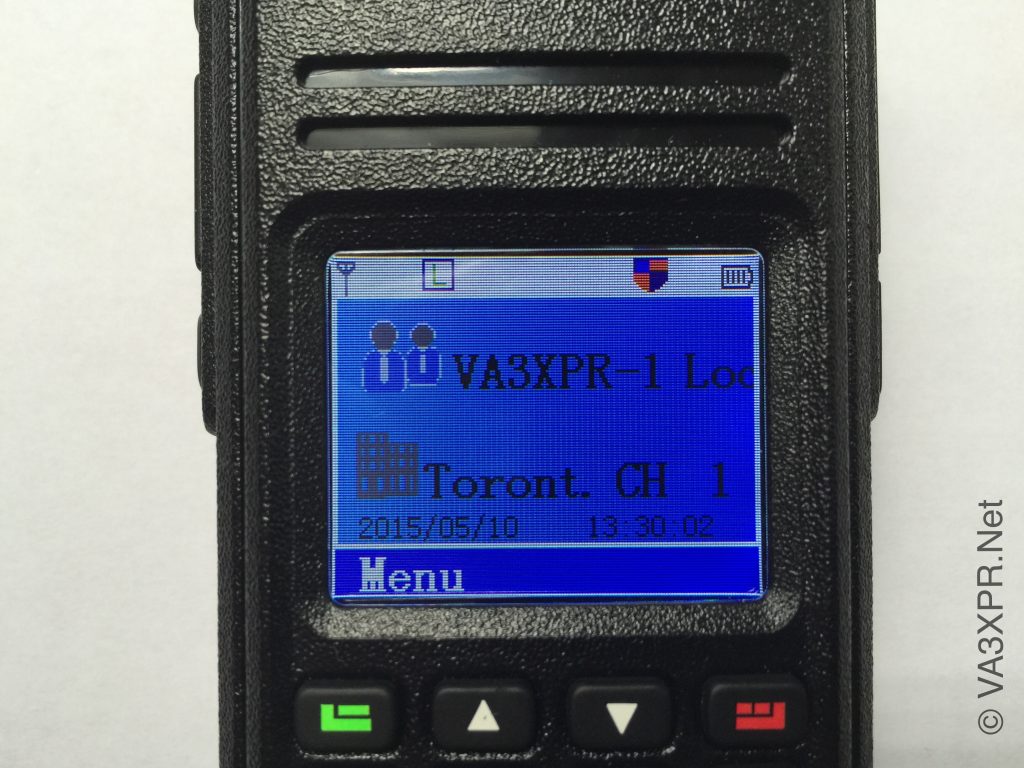
While the radio employs a much more usable display than other value priced DMR radios, TYT does not make good use of the LCD display’s available space to display information to the user. For example, channel name information of more than 11 characters will not be displayed fully on the LCD screen and the radio does not provide auto scroll functionality, allowing the user to see of the full channel name information. One way that TYT could improve the use of the MD-380’s LCD display would be to remove the Contact and Channel icons altogether, allowing more space on the display for channel name and zone information or enable an autoscroll functionality – either of which would allow the user to see the full channel name or zone details.
Also, the backlight brightness is not adjustable by the user and cannot be assigned as a programmable button in the programming software – both of which could be considered as potential radio improvements with a future firmware update.
There is a single LED indicator on the top front of the radio that is used to indicate the radio’s status as follows:
- Green: Received signal present
- Orange: Radio is scanning
- Red: Radio transmitting
Some other usability improvements that TYT could employ with future firmware updates would be:
- Text colour: The LCD display uses black text on a blue background on many screens, which can be difficult for users to discern. It would be recommended that TYT use white text on blue backgrounds;
- Day/Night modes: By creating a day mode, which employs a white background with black text and a night mode, which similarly employs a blue background with white text, TYT could make it easier for users to view information on the MD-380’s LCD display;
- Backlight brightness: By making the backlight brightness user adjustable, TYT could allow users to extend their battery life and also, make the radio more pleasing to view in bright or dark environments;
- Menu language: Simple item like “Confirm” in the radio’s menu could be simple to terms such as “OK”.
- Signal meter: Using black bars for the signal meter would improve its visibility;
- Batter meter: Slightly increasing the size of the battery meter would make it easier to determine the remaining battery life.
Modes of Operation
The MD-380 is a dual mode radio, allowing it to operate in either digital mode using DMR or in analog mode using FM. When in analog FM mode, the radio will support either 12.5 or 25 kHz channel operation. This will allow users to easily make the switch to DMR while continuing to allow them to operate using traditional 25 kHz FM.
RF Performance
The RF performance of the MD-380 compares specification-wise pretty much on par with most other DMR radios available on the market today. The transmit power of the radio can be set to either low power (~1W) or high power (~5W), but it not adjustable in terms of the values associated with each of these settings.
Accessories
The MD-380 comes standard with a 7.2V 2,000 mAh Li-ion battery, a 120/240V desktop charger, a belt clip, a stubby antenna, a whip antenna (UHF) and a user manual. Additional batteries and accessories, such as a speaker microphone and programming cable, can be purchased directly from one of the TYT authorized dealers. Since the MD-380 employs a dual pin accessory connector, which is used for programming and audio accessories, it should be compatible with other dual pin speaker microphones, such as the Motorola speaker microphone PMMN4013A.
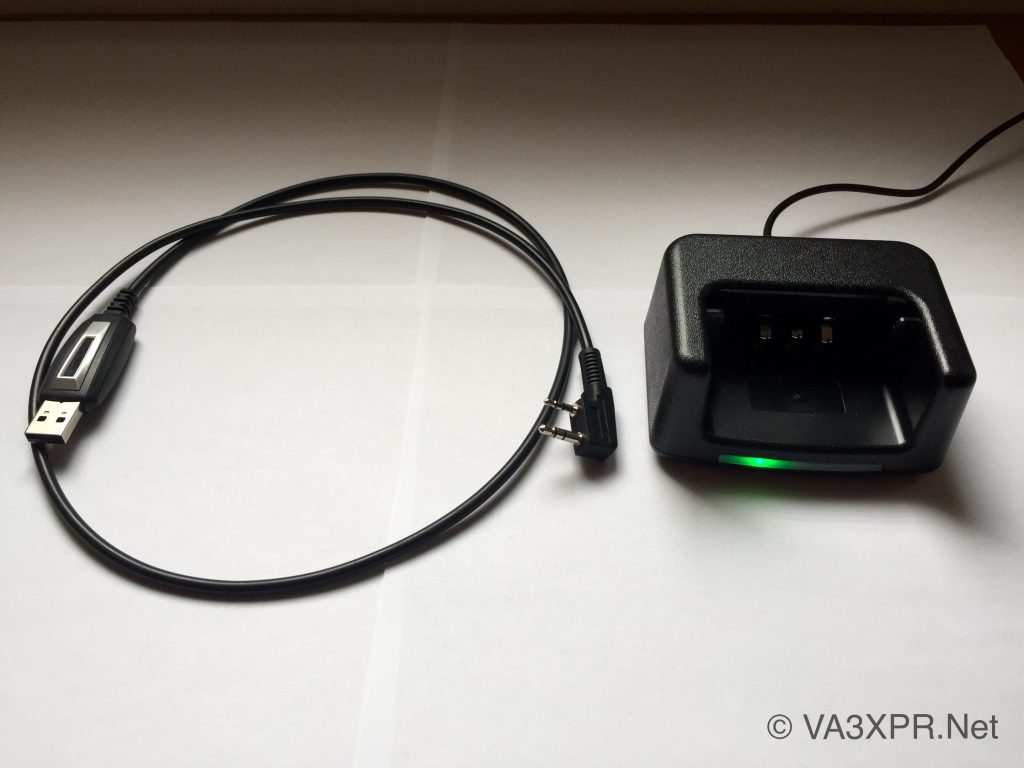
With regard to the desktop charge that is included with the MD-380, we found a couple of issues that we felt are worth mentioning. First, the time that it takes to fully charge the MD-380 is in the order of a couple of hours. This could be due to the power output capability of the 120/240V power adapter. While this is not a major issue, it could become a problem for users that only have a single battery. Also, one annoyance with this desktop charger is that once the radio is fully charged and removed from the charger, the bright green LED does not turn off, thus illuminating their shack or hotel room with a bright green glow at night.
Programming
CPS Programming Software
The MD-380 is programmed using the free programming software (or CPS) and a USB programming cable, which can be purchased from TYT for about $10 USD. It is notable that the MD-380 CPS is identical that used by the Connect Systems CS700, however codeplugs created for the CS700 are not recognized by the MD-380 CPS. For a sample MD-380 codeplug, we have created one for Toronto area that is available for download in the DMR Codeplug Files section of this website.
The programming software is intuitively structured, which should make it relatively easy to use, even for beginners. It should be noted that the radio used with this review was set-up and programmed within about 30 minutes, demonstrating the ease of use of this software. While it is refreshing to see intuitive programming software included with the radio, it is still not without its own headaches. Below are some examples of defects that were encountered with v1.27.0 of the programming software:
- The ability to copy and paste multiple channels or contacts is not supported;
- There are some instances of incomplete English translations in the software;
- Users are able to change the language of the programming software to Chinese, which may be difficult to revert back to English for some users, so beware;
- Some configuration in the programming software conflicts with items found in the radio menu. An example is that the Call Receive Tone, which can be enabled in the programming software on a per contact basis, however it does not function and cannot be found in the radio’s keypad menu under Utilities > Radio Settings > Tones and Alerts.
It should be emphasized that while the programming software does have some defects and could be improved over time, it is overall, quite easy to use and will likely help many users new to DMR get started with much less frustration than if they were using the programming software from other DMR radio manufacturers.
With regard to the ability for the user to upgrade the firmware of the MD-380, there was no software available for firmware upgrades at the time of this review, however it is likely that TYT will release this once the first firmware upgrade is available.
Front Panel Programming
One of the big differentiators for the MD-380 from other DMR radios on the market is that is supports the ability to be programmed via the keypad or Front Panel Programming (FPP). While the radio cannot be initially set-up via the keyboard, users can easily modify any existing programming via the keyboard, including RX and TX frequencies, channel name, colour codes, timeslot, PL (CTCSS) & DPL, and time out timer details. One notable that is missing from the FPP programming is the ability to change the talkgroup information, including the Group List or Contact Name. To get around this, users can create a FPP one and configuring a specific talkgroup per channel that could be customized as desired. Again, hopefully TYT can address this FPP shortcoming this in a future firmware update.
Overall, the FPP functionality of this radio makes it a real winner when it comes to travelling, as users can change programming on the fly without the need to bring their laptop along for the ride. It is important to note that users cannot create new talkgroups or modify existing ones via FPP, so they will need to make sure they have all of the talkgroup information they will need before they leave home.
Conclusion
The MD-380 is a great low-cost option for anyone looking to get started with DMR and at $170USD price point, they really cannot go wrong. While the radio has some minor usability issues, they are unlikely to adversely impact the functionality of the radio for most users. Overall, we feel that the MD-380 great addition the DMR radio options available to hams and is well positioned to become a big winner within the ham radio community. Interested in purchasing an MD-380? Check out our Ham Friendly Dealers page for a list of ham friendly TYT dealers. If you have additional questions about this radio, please join the DMR Facebook discussion group for more details.
If you found this review useful, please share it with your friends!
 VA3XPR Exploring the World of Digital Ham Radio
VA3XPR Exploring the World of Digital Ham Radio


